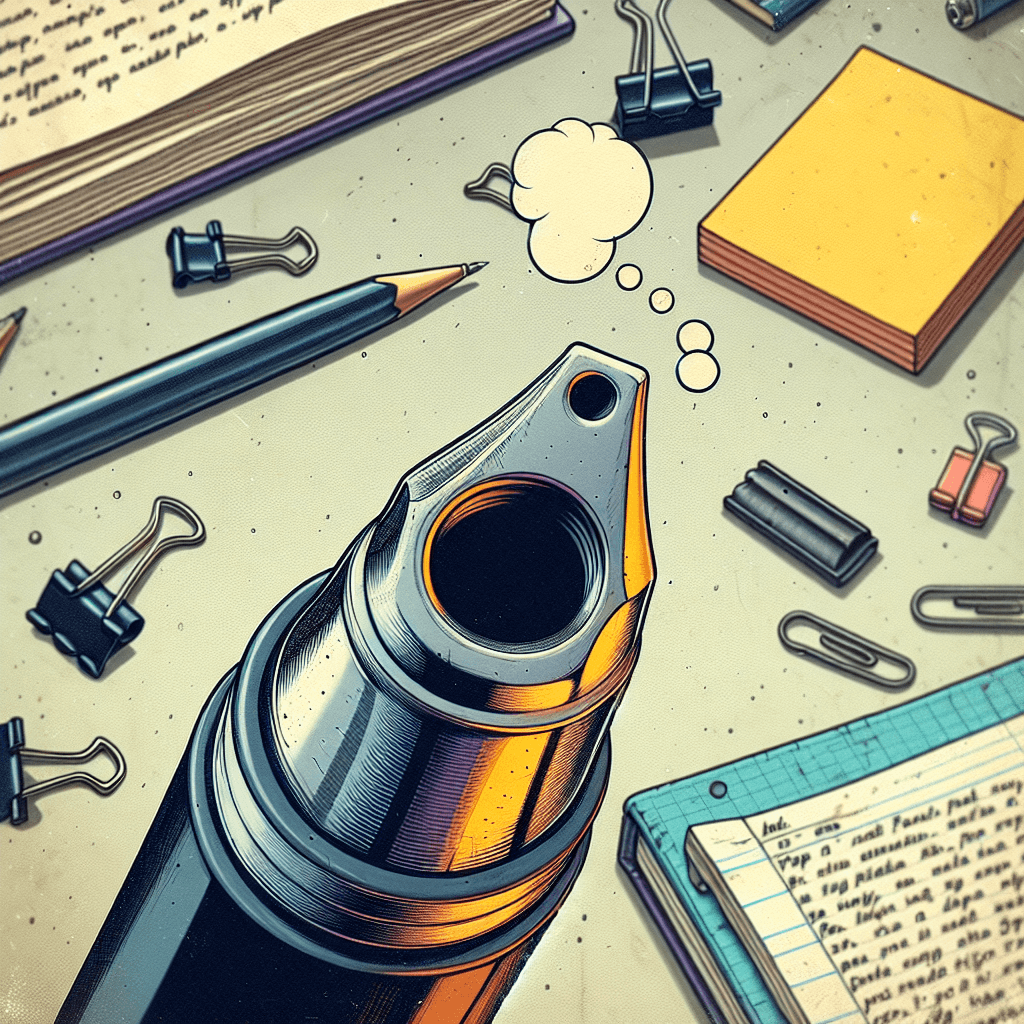The Unseen Guardian: Why Do Many Ballpoint Pen Caps Have a Small Hole at Their Tip
Ever wondered about the tiny hole at the tip of your pen cap? It's not a design quirk, but a surprisingly critical safety feature designed to save lives.


Too Long; Didn't Read
The hole in a pen cap is a safety feature to prevent suffocation. If the cap is accidentally swallowed, the hole allows air to pass through, keeping the airway from being completely blocked.
The Unseen Guardian: Why Do Many Ballpoint Pen Caps Have a Small Hole at Their Tip?
Ever idly chewed on a pen cap while lost in thought? Or perhaps you’ve noticed that tiny, almost insignificant hole at the very tip of many ballpoint pen caps and wondered about its purpose. Is it a design quirk? A manufacturing necessity? The answer, surprisingly, is a critical safety feature. This seemingly minor detail plays a crucial role, particularly for the most vulnerable among us. This blog post will delve into the primary reason why many ballpoint pen caps have a small hole at their tip, exploring the life-saving intention behind this common design.
The Primary Purpose: A Lifesaving Airway
The most significant and internationally recognized reason for that small hole in your pen cap is to prevent asphyxiation.
## A Choking Hazard Mitigated
Pen caps, especially from ballpoint pens, are small objects that can easily be accidentally ingested or inhaled, particularly by children who have a tendency to put things in their mouths. If a pen cap is swallowed and becomes lodged in the trachea (windpipe), it can block the airway, leading to suffocation.
The hole at the tip of the cap is designed to allow a small amount of air to pass through even if the cap is lodged in someone's throat. While not a guarantee against all harm, this feature can provide a crucial, albeit limited, passage for air, potentially giving a person more time until medical help can be administered. This simple design modification can be the difference between a frightening incident and a fatal one.
## The BIC Innovation and Industry Standards
The French company BIC, one of the world's largest pen manufacturers, is often credited with popularizing this safety feature. They began incorporating the hole in their iconic BIC Cristal pen caps decades ago. Recognizing the importance of this design, international safety standards were developed.
For example, the International Organization for Standardization (ISO) has a standard (ISO 11540:2014) specifying safety requirements for writing and marking instruments' caps intended for children up to 14 years of age. This standard mandates that if a cap is small enough to be ingested, it must be designed to reduce the risk of asphyxiation. This usually means having a hole that allows a minimum airflow or being too large to be a choking hazard. Many manufacturers worldwide now adhere to such safety guidelines.
Dispelling Common Myths
While the anti-asphyxiation feature is the primary reason, several other theories circulate about the purpose of the hole in pen caps. Let's address a few:
- Myth 1: To prevent ink from drying out. This is incorrect. The hole is not primarily for ink regulation. In fact, a sealed cap would arguably be better at preventing ink from drying, although most ballpoint inks are oil-based and less prone to rapid drying in the cartridge.
- Myth 2: To equalize air pressure and prevent leaks. While a hole would equalize pressure between the inside of the cap and the outside environment, preventing minor leaks or difficulty in removing a "vacuum-sealed" cap is a secondary benefit, not the main design driver. The primary concern addressed by the hole is safety.
- Myth 3: To allow the ink to dry on the nib after use. Ballpoint pen ink is designed to dry on contact with paper through absorption and evaporation, not while sitting on the nib inside the cap.
While some of these secondary effects (like pressure equalization) might occur due to the hole's presence, the overwhelming and critical design intent recognized by manufacturers and safety bodies is the prevention of suffocation.
Not All Pens, But a Prevalent Feature
It's important to note that not every pen cap has this hole. Some pens have caps that are too large to be considered a significant choking hazard for the airway, or they may have alternative safety features like clips designed to break away. However, for the common stick ballpoint pen, the hole is a widely adopted safety measure. The British Standards Institution also has a similar standard, BS 7272, which focuses on reducing the risk of asphyxiation from pen caps.
Conclusion: A Small Hole, A Big Impact
The next time you pick up a ballpoint pen and notice that small hole at the tip of its cap, you’ll know it’s not just an arbitrary design choice. It's a thoughtful and life-saving feature, a testament to how small design modifications can have a profound impact on safety. This tiny aperture serves as an unseen guardian, primarily designed to allow airflow if the cap is accidentally swallowed, thus mitigating a serious choking hazard. It’s a subtle reminder that even in the most mundane objects, considerations for human well-being can be ingeniously incorporated, turning an everyday item into a safer one for everyone, especially children.


